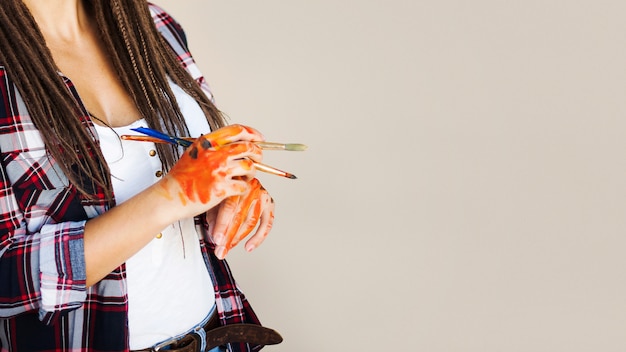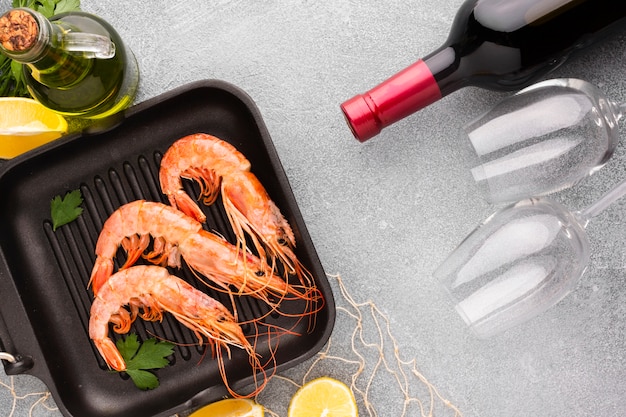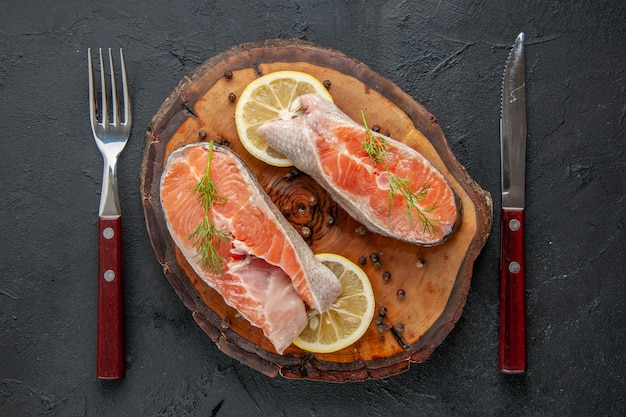King crab legs! Just the thought of those magnificent, meaty, succulent beauties makes my mouth water. They've always been a special occasion treat for me, a symbol of celebration and deliciousness. But let's be honest, cooking king crab legs perfectly can be a bit of a challenge. You want them tender, juicy, and bursting with flavor, not overcooked or rubbery. That's where this guide comes in! I'm going to share everything I've learned over the years – from choosing the perfect legs to mastering the art of cooking and cracking them – so you can enjoy the ultimate king crab feast.
(Part 1) The Quest for perfect king crab legs

Choosing Your Treasure
Finding those amazing king crab legs is the first step. It's all about quality, folks! I've learned that a little bit of knowledge goes a long way in avoiding disappointing crab legs. Here's what you need to look for:
- Freshness is Key: A good sniff test is your first line of defense. fresh king crab legs should smell like the ocean, not fishy or off-putting. The color should be a vibrant red, and avoid any legs that are discolored or have a slimy texture.
- Size Matters: King crab legs are usually sold by the pound, and you can choose smaller or larger legs based on how many people you're feeding. A bigger leg means more meat, but it also takes longer to cook. It's all about finding the sweet spot for your needs.
- The Shape of Things: Look for legs that are intact, with no missing pieces or cracks. The legs should be firm and well-formed, indicating good quality.
Keeping Your King Crab Fresh
Once you've snagged those beauties, storing them correctly is crucial. You want to keep them fresh and delicious for as long as possible. Here's how to do it:
- Refrigerator Storage: If you're not cooking them immediately, store them in the refrigerator for up to 2 days. Place them in a sealed container or wrap them tightly in plastic wrap. Make sure the fridge temperature is at least 35°F (2°C).
- Freezing for Later: You can freeze king crab legs for up to 3 months. Again, wrap them tightly in plastic wrap or aluminum foil and label them with the date. This way, you can enjoy a taste of the ocean any time you crave it.
(Part 2) Unveiling the Cooking Methods

Steaming: The Classic and Delicious
This is my go-to method for cooking king crab legs. It's simple, efficient, and produces the most tender, juicy, and flavorful meat. Here's the breakdown:
- Prepping the Steamer: Fill your steamer with water until it reaches the bottom of the steamer basket. Add a pinch of salt to the water to season the crab legs. Then, bring the water to a rolling boil.
- The Great Steaming: Carefully place your king crab legs in the steamer basket, ensuring they are evenly spaced and not overcrowded. Cover the steamer and let those beauties steam for 15-20 minutes. If your legs are larger, you might need to steam for a few minutes longer.
- Checking for Doneness: To test if the legs are cooked through, gently pull one of the joints. If it moves easily, they are ready! If the meat feels firm, just steam for a few more minutes.
Boiling: A Straightforward Approach
Boiling is another straightforward method, but I find that it can sometimes make the meat a bit tougher than steaming. However, it's a reliable option if you don't have a steamer.
- Getting Ready: Fill a large pot with enough water to cover the crab legs. Add a generous amount of salt and any herbs or spices you like (bay leaves, peppercorns, and garlic are my favorites). Bring the water to a full rolling boil.
- Adding the Legs: Gently lower the crab legs into the boiling water, making sure the water returns to a boil quickly. Cover the pot and let it boil for 10-15 minutes, or until the legs are cooked through. Larger legs might need a few extra minutes.
- The Joint Test: Again, use the joint-pulling method to check for doneness. If the meat moves easily, it's ready to enjoy!
Grilling: A Smoky Delight
Grilling king crab legs might sound unusual, but trust me, it's absolutely delicious! The grill adds a lovely smoky flavor to the meat. It's a fun and flavorful twist.
- Prepping the Grill: Preheat your grill to medium heat. You can use gas or charcoal, but avoid direct, intense heat as this can burn the legs. A more gentle heat ensures even cooking.
- Seasoning with Care: If you like, you can season the legs with a little salt, pepper, and maybe some garlic powder. It's not essential, but it can enhance the flavors. A light sprinkle is all you need.
- Grilling Time: Place the crab legs on the grill, ensuring they are evenly spaced. Close the lid and grill for 10-15 minutes, flipping them halfway through. Larger legs might need a bit longer.
- Doneness Check: You guessed it! The same joint-pulling test applies here. If the meat is tender, it's ready to enjoy!
(Part 3) Mastering the Timing

cooking time: The Key to Success
Getting the cooking time right is crucial. Undercook the legs, and you'll end up with tough, rubbery meat. Overcook them, and the meat will be dry and flavorless. It's all about achieving that perfect balance.
Remember: Cooking time depends on the size of the legs. The bigger the leg, the longer it needs to cook.
General Cooking Time Guidelines
- Small Legs (Under 1 pound): 10-15 minutes
- Medium Legs (1-2 pounds): 15-20 minutes
- Large Legs (2 pounds or more): 20-25 minutes
doneness test: The Tell-Tale Sign
The best way to ensure perfect king crab legs is to use the joint-pulling test:
- The Joint Test: Gently try to pull apart one of the joints. If it moves easily, the legs are done. If the meat is still a bit firm, cook for a few more minutes.
- The Meat Test: If you're using the boiling method, you can check the meat by piercing it with a fork. If the meat easily flakes, it's done. If it's still firm, keep boiling for a few more minutes.
(Part 4) Cracking the Code: Getting to the Meat
Essential Tools for the Job
Now, for the fun part – cracking open those legs and getting to the delicious meat inside! You'll need a few tools:
- crab cracker: This tool is specifically designed for cracking open crab legs. It's the best way to get to the meat without creating a big mess.
- Crab Fork: This long, slender fork is perfect for pulling out the meat from the leg, making it easy to extract those succulent chunks.
- Nutcracker: If you don't have a crab cracker, a good old-fashioned nutcracker can work as a decent substitute. It might take a bit more effort, but it'll do the trick.
Cracking the Leg: A Step-by-Step Guide
Once you've got your tools, let's get cracking! Here's a simple method to ensure you get to that delicious meat:
- Finding the Weak Spot: Look for the joint where the leg bends. This is the weakest point and the easiest place to crack it open.
- Secure the Leg: Place the leg on a cutting board or a sturdy surface. Make sure it's secure so it doesn't move around while you're cracking it.
- Time to Crack: Using your crab cracker or nutcracker, carefully apply pressure to the joint. You'll hear a satisfying crack as the leg breaks open.
- Extracting the Treasure: Use your crab fork to carefully pull out the meat from the leg. It should come out in delicious, juicy chunks. Be patient, and it will come out easily.
(Part 5) Serving Your King Crab Feast
Presentation is Key
You've cooked and cracked those beautiful king crab legs. Now it's time to present them in a way that's both delicious and visually appealing. Here's how to create a show-stopping crab leg feast:
- A Platter of Delight: Place the cracked legs on a large platter, arranged in a way that looks inviting. You can add a few sprigs of fresh parsley or lemon slices for a touch of elegance.
- The Perfect Accompaniments: King crab legs are best enjoyed with a variety of delicious sides:
- Melted Butter: This classic accompaniment is a must-have. Dip those tender crab legs into a pool of warm, melted butter for a flavor explosion.
- Lemon Wedges: A squeeze of lemon adds a refreshing touch and cuts through the richness of the crab meat. It's a simple but effective way to enhance the flavors.
- Hot Sauce: If you enjoy a bit of heat, a good hot sauce is a great addition. It adds a kick that complements the delicate flavor of the crab.
- Garlic Butter: For a more complex and savory flavor, try a garlic butter sauce. It adds a depth of flavor that will have you wanting more.
- Side Salads: A simple side salad can help balance out the richness of the crab. Choose a salad with fresh, crisp ingredients to provide a refreshing contrast.
- Adding a Touch of Elegance: You can make your presentation even more impressive by using serving plates with a rustic or coastal theme. It adds a touch of sophistication to your feast.
(Part 6) Embracing the Eating Experience
Savoring Every Bite
Eating king crab legs is an experience in itself. Don't rush it. Take your time to enjoy the process, savor the flavors, and enjoy the company you're with.
Here are a few tips for making the most of your king crab feast:
- Take Your Time: Relax, enjoy the conversation, and savor each bite of that juicy, flavorful crab meat. It's all about the experience.
- Don't Skimp on the Butter: Dip those crab legs generously in melted butter. It's a classic pairing that elevates the flavors of the crab meat to new heights.
- Sharing is Caring: Enjoy the feast with loved ones and create memories that will last a lifetime. It's a wonderful way to share a culinary adventure with friends and family.
(Part 7) Leftovers: Making the Most of Them
Storing Leftovers
If you have any leftover king crab legs, store them properly to preserve their freshness and flavor:
- Refrigerator: Store any leftover crab legs in an airtight container in the refrigerator for up to 3 days. You can also wrap the legs tightly in plastic wrap or aluminum foil. The goal is to keep them protected from air and moisture.
Reheating for Another Delicious Meal
You can reheat leftover king crab legs in a variety of ways. It's a great way to enjoy that delicious crab meat even after your initial feast.
Here are a few methods:
- Microwave: Place the crab legs on a microwave-safe plate and heat on high for 30-60 seconds, or until heated through. Be careful, as the meat can become dry if reheated for too long. It's best to reheat in short bursts.
- Oven: Preheat your oven to 350°F (175°C). Place the crab legs in a baking dish and heat for 10-15 minutes, or until heated through. This method helps to maintain the moisture of the crab meat.
- Skillet: Heat a little butter in a skillet over medium heat. Add the crab legs and cook for 2-3 minutes per side, or until heated through. This method adds a touch of flavor and keeps the meat moist.
(Part 8) Expanding Your King Crab Horizons
Beyond the Feast: King crab leg recipes
King crab legs aren't just for a special feast. They can be incorporated into a variety of delicious dishes! Here are a few ideas to get your creative juices flowing:
- Crab Cakes: Combine cooked crab meat with breadcrumbs, mayonnaise, and your favorite seasonings to create delicious crab cakes. Fry or bake them until golden brown. They're a classic and delicious way to use leftover crab legs.
- Crab Pasta: Toss cooked crab meat with your favorite pasta, a creamy sauce, and fresh herbs for a satisfying meal. It's a simple yet elegant way to use leftover crab meat.
- Crab Salad: Combine cooked crab meat with mayonnaise, celery, onion, and seasonings for a light and refreshing salad. It's a perfect summer meal or a side dish for a barbecue.
- Crab Dip: Combine cooked crab meat with cream cheese, sour cream, and seasonings for a delicious dip that's perfect for parties or a casual gathering.
(Part 9) The Journey of King Crab Legs
From Ocean to Plate: A Culinary Adventure
King crab legs are a fascinating food with a rich history and a complex journey from the ocean to your plate. It's a journey worth understanding!
Here's a glimpse into the adventure:
- Harvesting: King crabs are typically harvested by fishermen using traps. They are carefully caught, ensuring that the population is managed sustainably, so we can enjoy these delicacies for years to come.
- Processing: Once caught, the king crabs are processed and packaged for shipping. This can involve boiling, freezing, or other preservation methods to ensure they stay fresh and delicious.
- Distribution: The processed crab legs are then distributed to markets and restaurants around the world, bringing a taste of the ocean to tables everywhere.
(Part 10) FAQs: Your King Crab Questions Answered
FAQs:
| Question | Answer |
|---|---|
| Can I freeze cooked king crab legs? | Yes, you can freeze cooked king crab legs for up to 3 months. Make sure they're tightly wrapped in plastic wrap or aluminum foil. When you're ready to use them, defrost them in the refrigerator overnight. This will help prevent them from becoming mushy. |
| What's the best way to thaw frozen king crab legs? | The best way to thaw frozen king crab legs is to place them in the refrigerator overnight. Thawing them slowly will help to prevent them from becoming mushy. Avoid thawing them at room temperature, as this can encourage bacteria growth. |
| How do I know if king crab legs are bad? | If the legs smell fishy or ammonia-like, or if the meat is discolored or slimy, they are probably bad and should be discarded. Your senses are your best guide when it comes to determining freshness. |
| What if my king crab legs are undercooked? | If you accidentally undercook your king crab legs, you can always steam them for a few more minutes to ensure they're cooked through. It's better to err on the side of caution when it comes to food safety. |
| What if my king crab legs are overcooked? | While overcooked king crab legs won't make you sick, they will be tougher and less flavorful. Unfortunately, there's not much you can do to fix overcooked crab legs. It's a good reminder to stick to those recommended cooking times. |
There you have it! Your complete guide to cooking king crab legs perfectly. I hope you've found this guide helpful and that you have a delicious feast with friends and family. Remember, it's all about embracing the experience and savoring those succulent, juicy crab legs! Happy eating!
Everyone is watching

Prime Rib Roast Cooking Time Chart: Per Pound Guide
Cooking TipsPrime rib roast. Just the name conjures images of lavish dinners, crackling fires, and hearty laughter. It’s ...

How Long to Bake Potatoes in the Oven (Perfect Every Time)
Cooking TipsBaked potatoes are a staple in my kitchen. They're incredibly versatile, delicious, and surprisingly easy to m...

Perfect Rice Every Time: The Ultimate Guide to Cooking Rice
Cooking TipsAs a self-proclaimed foodie, I've always been a bit obsessed with rice. It's the foundation of countless cuisi...

The Ultimate Guide to Cooking Asparagus: Tips, Techniques, and Recipes
Cooking TipsAsparagus. The mere mention of this spring delicacy conjures up images of vibrant green spears, crisp and burs...

Ultimate Guide to Cooking the Perfect Thanksgiving Turkey
Cooking TipsThanksgiving. Just the word conjures up images of overflowing tables laden with delicious food, the scent of r...
